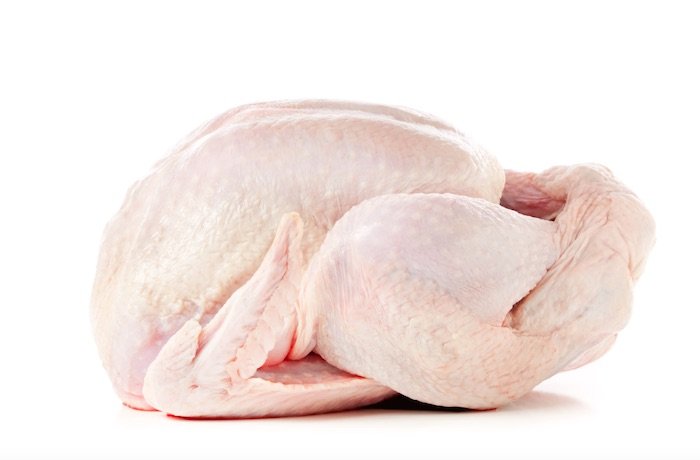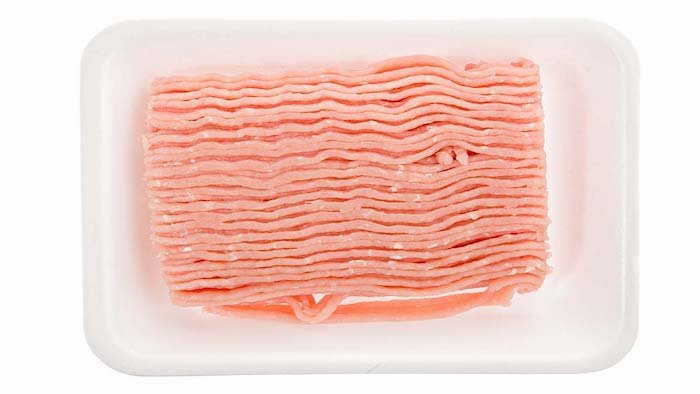With just days to go until Thanksgiving, the Centers for Disease Control and Prevention (CDC) wants to remind us that Salmonella contamination in turkeys is an industrywide problem. The reminder has come in the form of a summary of an outbreak that spanned two years and 42 states sickening 358 people with Salmonella Reading infections, killing one of them. While investigating the outbreak, which ended in April 2019, health officials discovered that the outbreak strain was widespread in all parts of the turkey industry.
And it still is.
So, hang on there for a second Thanksgiving hosts. While you are busy pinning down sidedishes and mapping out a meal that is as much about timing and the triumph of limited oven space as it is about foods we don’t often eat shared with family and friends we don’t see often enough, there are a couple more things you need to know, according to the CDC.
The first one is your turkey is likely contaminated with Salmonella and you should treat it like a germ bomb. Unwrap it in a spot that is away from other foods. Don’t wash it in the sink and splash all of those germs around your kitchen. Clean up any spills of its juices with hot soapy water immediately. Wash your hands each time you handle or touch the raw turkey. And when you wash your hands, wash them as though you are scrubbing in for surgery so you don’t spread germs around your kitchen. And use a food thermometer to make sure you have cooked it to a temperature hot enough to kill Salmonella, 165˚ F.
Whether its fresh or frozen; whole or parts; for Thanksgiving or any other Thursday, you are going to need to keep treating turkey like this for the foreseeable future because the turkey industry has a widespread Salmonella problem that includes “all parts of the supply chain, including slaughter and processing facilities and upstream farm sources,” according to the CDC. And because the industry has not addressed the problem, it falls to you the consumer, you the Thanksgiving chef, to deal with it.

Minnesota Department of Health Cracks the Case
Salmonellosis is a reportable disease so when someone gets sick and the case is confirmed through laboratory testing, the state health department needs to be notified. State and federal health agencies can identify the “fingerprint” of the Salmonella strain responsible for each illness with special tests. Then they upload these prints to a national database where any matches would indicate a shared source of contamination, an outbreak.
That’s what happened in January 2018 when the Minnesota Department of Health noticed three matching prints. One from a patient who had consumed ground turkey, and two who lived in a household where pets were served raw turkey pet food. They also found the strain in a turkey product purchased from a retail store.
These findings led to the discovery of hundreds of other cases of people sickened by this strain between November 20, 2017–March 31, 2019. Whether it was consumption of turkey, exposure to raw turkey pet food or contact with live birds, turkey was the common link. So, health officials started testing products and facilities looking for Salmonella.
And they found it.
Investigators found the outbreak strain in 178 samples of raw turkey products from 24 slaughter and 14 processing establishments in 21 states. They also found it in 120 retail turkey samples and 10 samples from live turkeys.
The Salmonella was everywhere and it was causing serious illness. The Salmonella attorneys at the national food safety law firm Pritzker Hageman represented several clients in this outbreak including a 5-year-old girl who developed osteomyelitis, a painful bone infection, as a complication of her Salmonella infection.

In July 2018, officials from the CDC and U.S. Department of Agriculture’s Food Safety and Inspection Service (USDA FSIS) met with the National Turkey Federation, which represents turkey farmers and processors, to show them the information they had discovered and ask what steps the industry could take to mitigate the problem. The Turkey Federation responded by developing a “Salmonella control program” to share with all parts of the industry.
But 18 months on, the Salmonella control program has more controlling to do. While the CDC declared an end to the outbreak on April 30, 2019, it wasn’t because illnesses had stopped being reported, only that they had decreased in number. For now.
This industry-wide contamination is still a huge problem And, as the CDC makes clear, it’s a problem the industry should solve, not a burden consumers should bear.
“Because contamination was widespread, interventions needed to target all parts of the supply chain, including slaughter and processing facilities as well as upstream farm sources. Although elimination of Salmonella from poultry flocks and products is challenging, the responsibility to develop effective strategies for Salmonella reduction along the production chain begins with industry.”
Contact the Pritzker Hageman Salmonella Team
Phone: 1-888-377-8900 | Text: 1-612-261-0856
